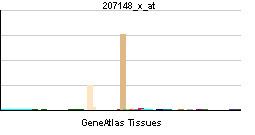Entrez 51778 | Ensembl ENSG00000172399 | |
 | ||
Aliases MYOZ2, C4orf5, CMH16, CS-1, myozenin 2 External IDs MGI: 1913063 HomoloGene: 9583 GeneCards: MYOZ2 | ||
Myozenin-2, also referred to as Calsarcin-1, is a protein that in humans is encoded by the MYOZ2 gene. The Calsarcin-1 isoform is a muscle protein expressed in cardiac muscle and slow-twitch skeletal muscle, which functions to tether calcineurin to alpha-actinin at Z-discs, and inhibit the pathological cardiac hypertrophic response. This differs from the fast-skeletal muscle isoform, calsarcin-2.
Contents
Structure
Calsarcin-1 is a 29.9 kDa protein composed of 264 amino acids. Calsarcin-1 and calsarcin-2 are only 31% homologous (94 identical amino acids), exhibiting the highest homology at N- and C-termini. Calsarcin-1 binds to alpha-actinin, gamma-filamin, telethonin, ZASP/Cypher and calcineurin. The binding region of calsarcin-1 to alpha-actinin is localized to amino acids 153-200, and that of calsarcin-1 to calcineurin is amino acids 217-240.
Function
The function of calsarcin-1 in cardiac and slow-skeletal muscle has been illuminated through studies in transgenic animals. Mice lacking the MYOZ2 gene (MYOZ2-/-) are generally sensitized to calcineurin signaling in both muscle types. In slow-skeletal muscle, MYOZ2-/- show increased slow-twitch muscle fibers. In cardiac, MYOZ2-/- show induction of the fetal gene program typical of pathologic hypertrophy, however there was no evidence of hypertrophied morphometry at baseline. However, upon calcineurin activation or pressure overload-induced pathologic hypertrophy, MYOZ2-/- exhibited exaggerated cardiac hypertrophy, demonstrating that calsarcin-1 negatively modulates the function of calcineurin during pathologic hypertrophic remodeling. Additional studies supported these findings in demonstrating that adenoviral overexpression of calsarcin-1 attenuated Gq alpha subunit-stimuated hypertrophy and ANP induction, by Angiotensin II, phenylephrine and endothelin-1 agonists in neonatal cardiomyocytes. Overexpression of calsarcin-1 in mice (CS1Tg) was protective against Angiotensin II-induced pathologic cardiac hypertrophy, evidenced by preserved fractional shortening and contractility, as well as a blunted induction of the fetal hypertrophic gene program and significantly reduced expression of calcineurin-stimulated MCIP1.4 gene expression. Taken together, these studies strongly support a role for calsarcin-1 in suppressing pathologic cardiac hypertrophy.
Clinical Significance
Two missense mutations in MYOZ2, Ser48Pro and Ile246Met, have been shown to be causal for rare forms of familial hypertrophic cardiomyopathy.
